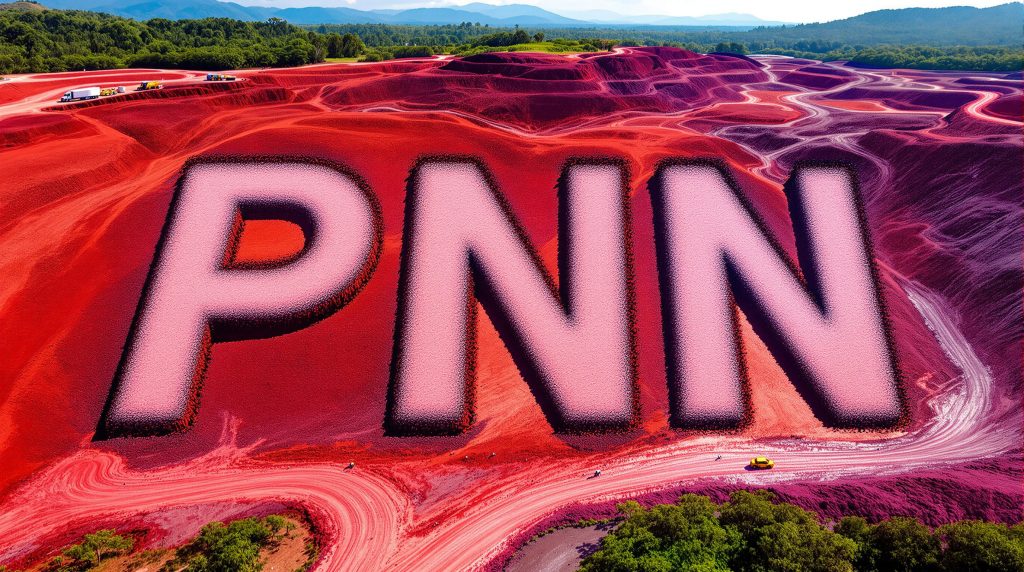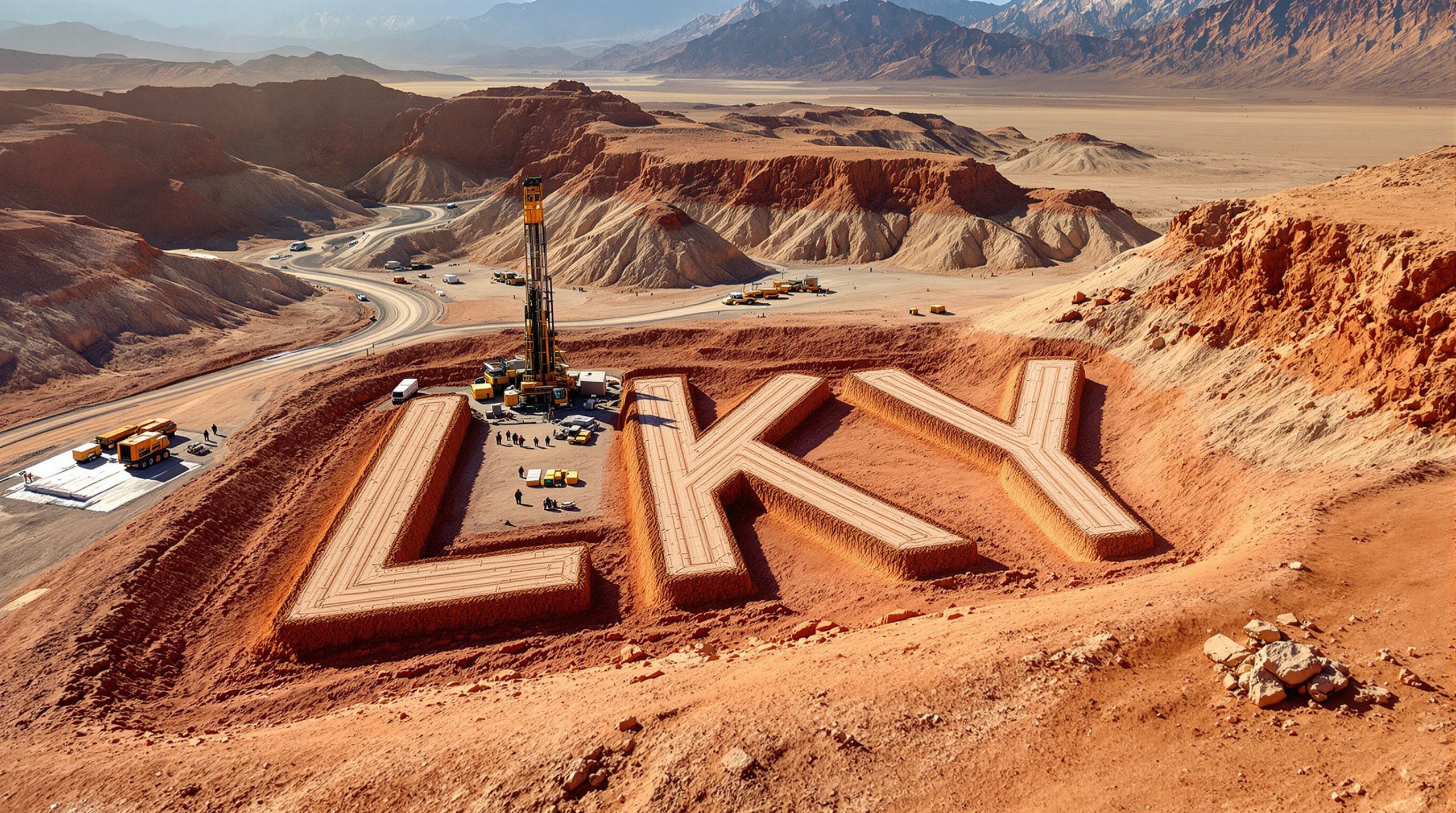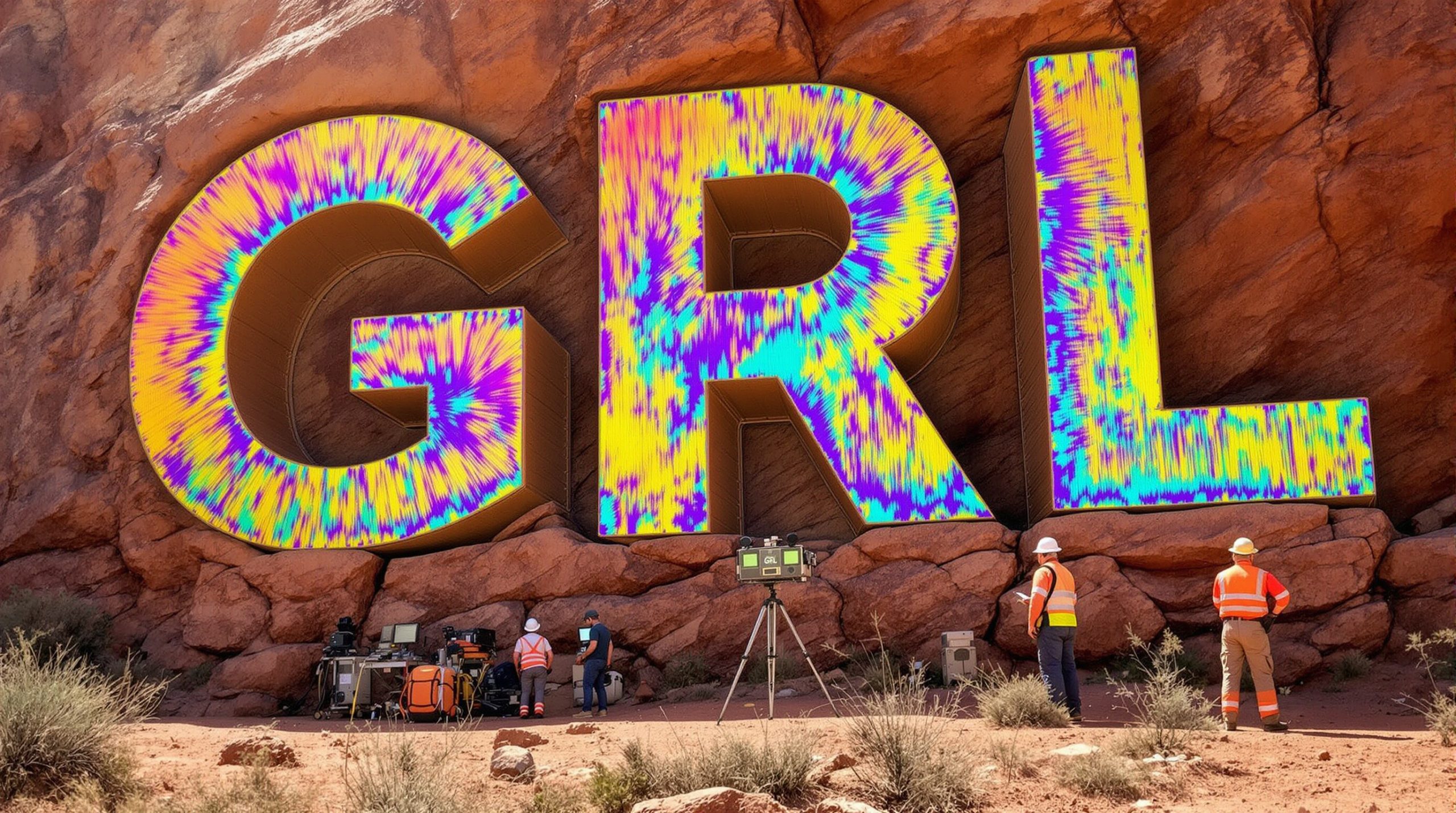Record-Breaking REE Grades Signal Major Potential at Power Minerals' Santa Anna Project
Power Minerals Limited (ASX: PNN) has announced its highest-grade rare earth element (REE) drill results to date from the Power Minerals Santa Anna Project in Brazil, with exceptional assays reaching up to 6.20% TREO in near-surface mineralisation.
Spectacular REE Grades Confirmed Through Re-Analysis
The breakthrough results came after Power Minerals re-tested samples from previous drilling that had initially exceeded laboratory testing limits. The re-assayed results revealed substantially higher grades than previously reported, including:
-
14m at 1.79% TREO from surface to end of hole in drillhole MN-AC-0007, including:
- 5m at 2.85% TREO from 1m, including
- 1m at 6.20% TREO from 4m with 0.76% NdPr
-
51m at 1.16% TREO from surface to end of hole in drillhole MN-RC-0009, including:
- 3m at 4.26% TREO from 6m including
- 1m at 5.50% TREO from 8m and
- 6m at 3.01% TREO from 28m including
- 1m at 5.29% TREO from 28m
The highest-grade intercepts from Santa Anna now stand at 6.20%, 5.50%, and 5.29% TREO, representing some of the most substantial REE grades in the sector.
"Having re-assayed samples from previous drilling by project vendor EDEM at the Santa Anna Project, we are excited to announce the highest grade REE drilling results to date at the project. The exceptional outcomes of the re-assaying have verified and superseded previous sample results, and importantly have provided us with a deeper understanding of our exploration model for the Project – in particular in relation to grade and potential size," said Power Minerals Managing Director, Mena Habib.
Understanding the Technical Achievement
The original analysis conducted by SGS Geosol laboratory was incomplete as it targeted phosphate mineralisation rather than REEs. When the samples were initially tested, certain rare earth elements exceeded the detection limits for the laboratory methods used.
Twenty-one pulverised pulp samples were recovered and submitted to ALS Laboratory for more comprehensive analysis after initial results indicated values exceeding detection limits for lanthanum (La>1%), cerium (Ce>1%), praseodymium (Pr>0.1%), and samarium (Sm>0.1%).
This re-analysis demonstrated that the original results represented minimum estimates of the actual REE grades present. The newly obtained data will now supersede the previous analyses in Power's resource model for Santa Anna.
What Are Rare Earth Elements and Why Do They Matter?
Rare earth elements are a group of 17 metallic elements crucial for many high-tech applications, including permanent magnets used in electric vehicles, wind turbines, and electronic devices. Despite their name, most REEs are relatively abundant in the Earth's crust, but concentrated, economically viable deposits are rare.
The most valuable REEs are typically those used in permanent magnets, particularly neodymium, praseodymium, dysprosium, and terbium. The high NdPr content (neodymium and praseodymium) in Power's samples is particularly significant as these elements command premium prices due to their essential role in manufacturing the strongest permanent magnets available.
A single EV motor can contain up to 1kg of NdPr, while large offshore wind turbines may require several hundred kilograms of rare earth magnets. With the global transition to renewable energy accelerating, demand for these critical minerals is projected to increase dramatically in the coming decades.
REE Classification and Terminology
For investors new to the REE sector, it's important to understand several key terms that appear in reporting:
TREO (Total Rare Earth Oxides): The combined total of all rare earth oxides, including light and heavy rare earths plus yttrium.
HREO (Heavy Rare Earth Oxides): The heavier elements in the rare earth series, generally considered more valuable due to their scarcity.
CREO (Critical Rare Earth Oxides): Those REEs designated as critical for industrial and defence applications by various governments.
MREO (Magnet Rare Earth Oxides): The specific rare earths used in permanent magnet production.
NdPr: The combined value of neodymium and praseodymium oxides, which are the primary components of rare earth permanent magnets.
Strategic Project Location and Scale
Power Minerals holds the entire under-explored Santa Anna Carbonatite Alkaline Complex under two permits covering 17.05km². The project is located in Goiás state, Brazil, approximately 335km northwest of the Brazilian capital of Brasilia.
The Santa Anna Project is situated in the northern part of the Goiás Alkaline Province, a region known for its late Cretaceous alkaline magmatism. The mineralogy suggests a significant carbonatite intrusion, which is one of the most favourable geological settings for REE deposits globally.
What makes this project particularly interesting is the combination of high-grade niobium and REE mineralisation. Power's maiden RC drilling has shown that niobium and REE mineralisation extends deep into the fresh rock below, with an exceptional REE-rich clay layer near the surface.
Carbonatites: The Premier REE Host Rocks
Carbonatites are igneous rocks containing more than 50% carbonate minerals, and they represent the most important source of rare earth elements worldwide. Many of the world's largest and highest-grade REE deposits are associated with carbonatite complexes, including:
- Bayan Obo (China) – The world's largest REE deposit
- Mount Weld (Australia) – One of the highest-grade deposits globally
- Mountain Pass (USA) – A major historical and current REE producer
Carbonatites typically form circular intrusive complexes with concentric zoning, often surrounded by fenite alteration halos. The Santa Anna Project displays many of these characteristic features, suggesting its potential to host significant REE mineralisation.
What makes carbonatites particularly effective as REE hosts is their unusual chemistry and mineralogy. The carbonate-rich environment allows for the concentration of rare earth elements in minerals such as bastnäsite, monazite, and xenotime, which can be processed to extract these valuable elements.
Technical Analysis Methodology
The re-analysis process conducted by Power Minerals provides a technical case study in proper mineral exploration protocols. When initial analyses return values at or above detection limits, it's standard industry practice to re-analyse using methods with higher detection limits.
In this case, 21 pulverised pulp samples were recovered from previous laboratory work and submitted to ALS Laboratory for more comprehensive analysis. ALS employed their ME-MS-89L method, which uses sodium peroxide fusion followed by ICP-MS analysis—a technique specifically designed for high-grade rare earth samples.
The sodium peroxide fusion method is particularly effective for breaking down resistant minerals that might contain rare earth elements, ensuring a complete dissolution of the sample and more accurate results. This approach is considered the gold standard for REE analysis in the industry.
Next Steps and Future Potential
With high-grade niobium and REE mineralisation established and leach testing commenced, Power is positioned to rapidly progress drilling at Santa Anna. The company aims to test new shallow and deeper areas to further demonstrate the project's potential as a significant REE and niobium resource.
The company is currently conducting a follow-up drilling campaign, with results to be progressively announced as they become available. The high grades reported to date suggest Santa Anna could become a major player in the global REE market.
Future work programs are likely to include:
- Expanded drilling to define the extent of high-grade mineralisation
- Detailed mineralogical studies to identify the REE-bearing minerals
- Preliminary metallurgical testing to establish recovery rates
- Initial resource estimation if drilling results continue to be positive
Why Investors Should Take Note
The Santa Anna Project represents a compelling investment opportunity for several reasons:
-
Exceptional grades: The newly reported grades of up to 6.20% TREO are among the highest reported in the industry.
-
Critical mineral diversity: The project contains both rare earth elements and niobium, another critical mineral used in high-strength steel alloys and superconductors.
-
Near-surface mineralisation: The presence of high-grade mineralisation starting from surface suggests potential for low-cost open-pit mining.
-
Strategic location: Brazil is a mining-friendly jurisdiction with established infrastructure.
-
Exploration upside: With the entire carbonatite complex under Power's control and much of it still unexplored, there is significant potential for resource expansion.
As global demand for critical minerals continues to grow, projects like Santa Anna that can deliver high-grade REEs will become increasingly valuable. Power Minerals appears well-positioned to capitalise on this opportunity as it advances this promising project toward resource definition.
Investors should monitor upcoming drilling results closely, as continued high-grade intercepts could significantly enhance the project's economic potential and Power Minerals' market valuation.
Want to Capitalise on Power Minerals' Record-Breaking REE Discovery?
Don't miss the opportunity to be part of Power Minerals' exciting journey at their Santa Anna Project, where exceptional grades of up to 6.20% TREO have been discovered in near-surface mineralisation. As global demand for critical minerals continues to grow, this could represent a significant investment opportunity in the rare earth elements sector. To learn more about Power Minerals and their promising Santa Anna Project in Brazil, visit www.powerminerals.com.au for detailed information and updates on their exploration progress.




